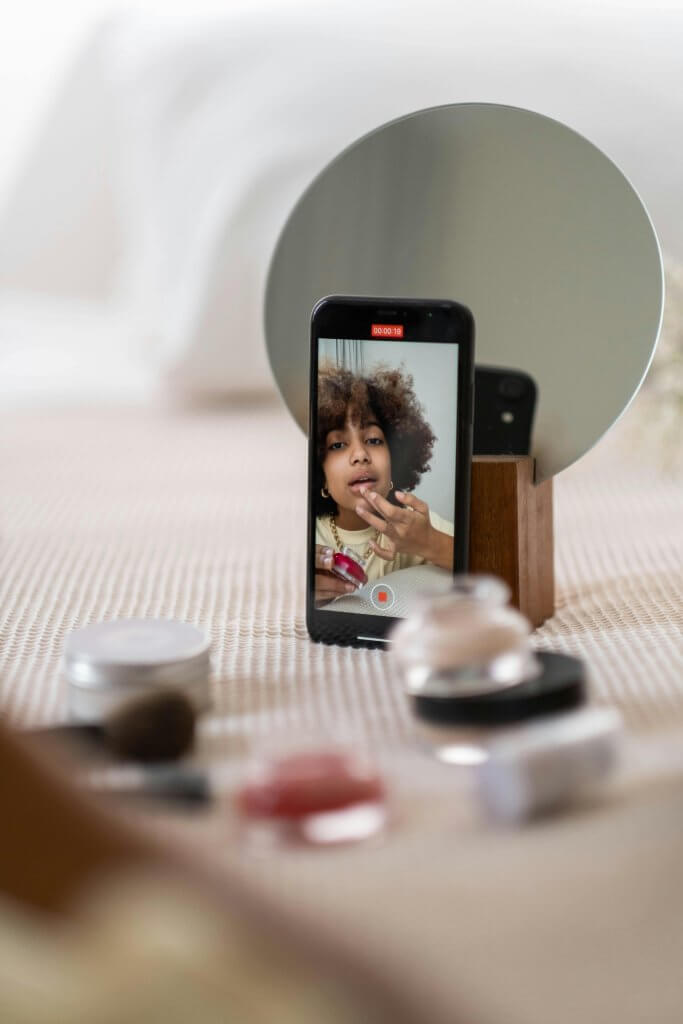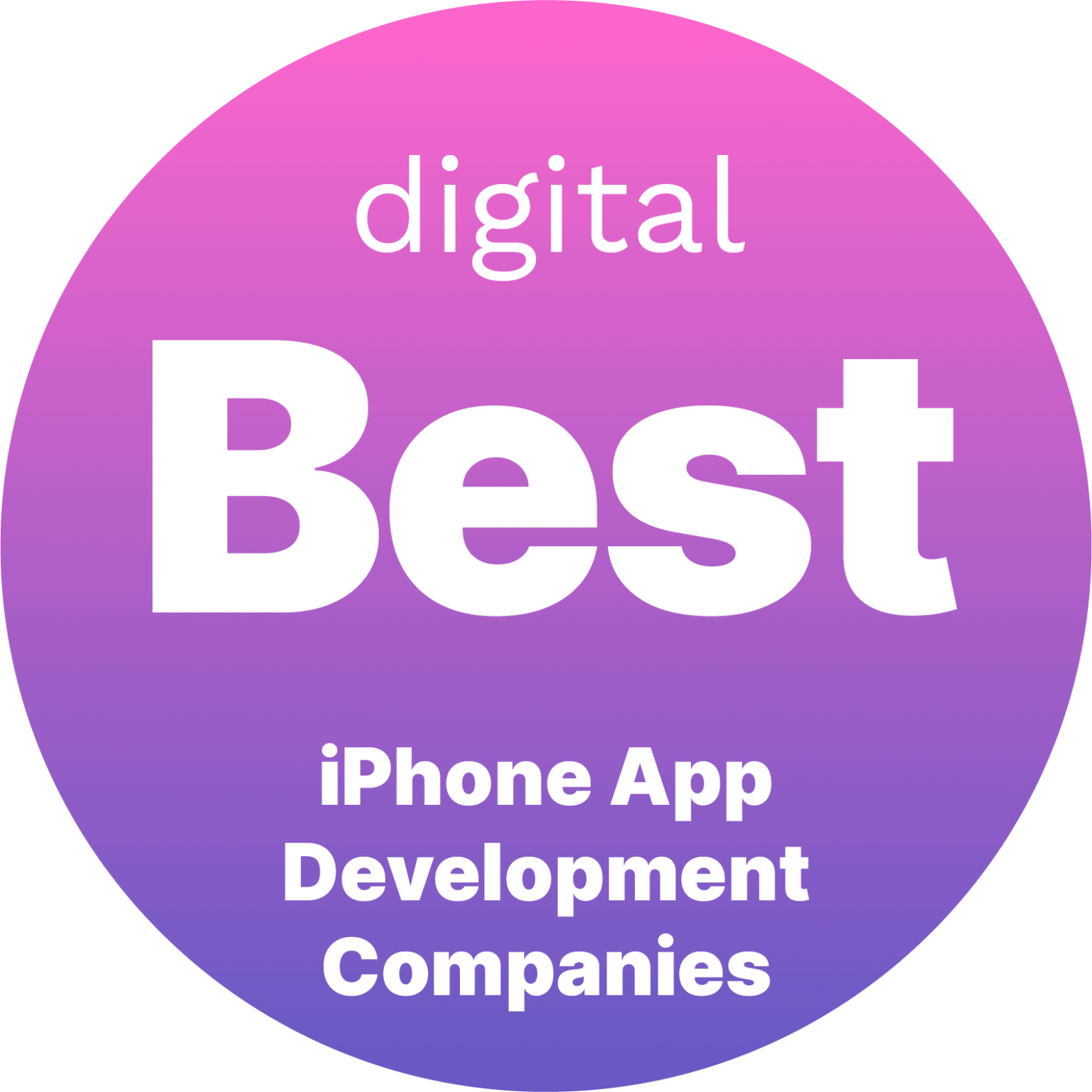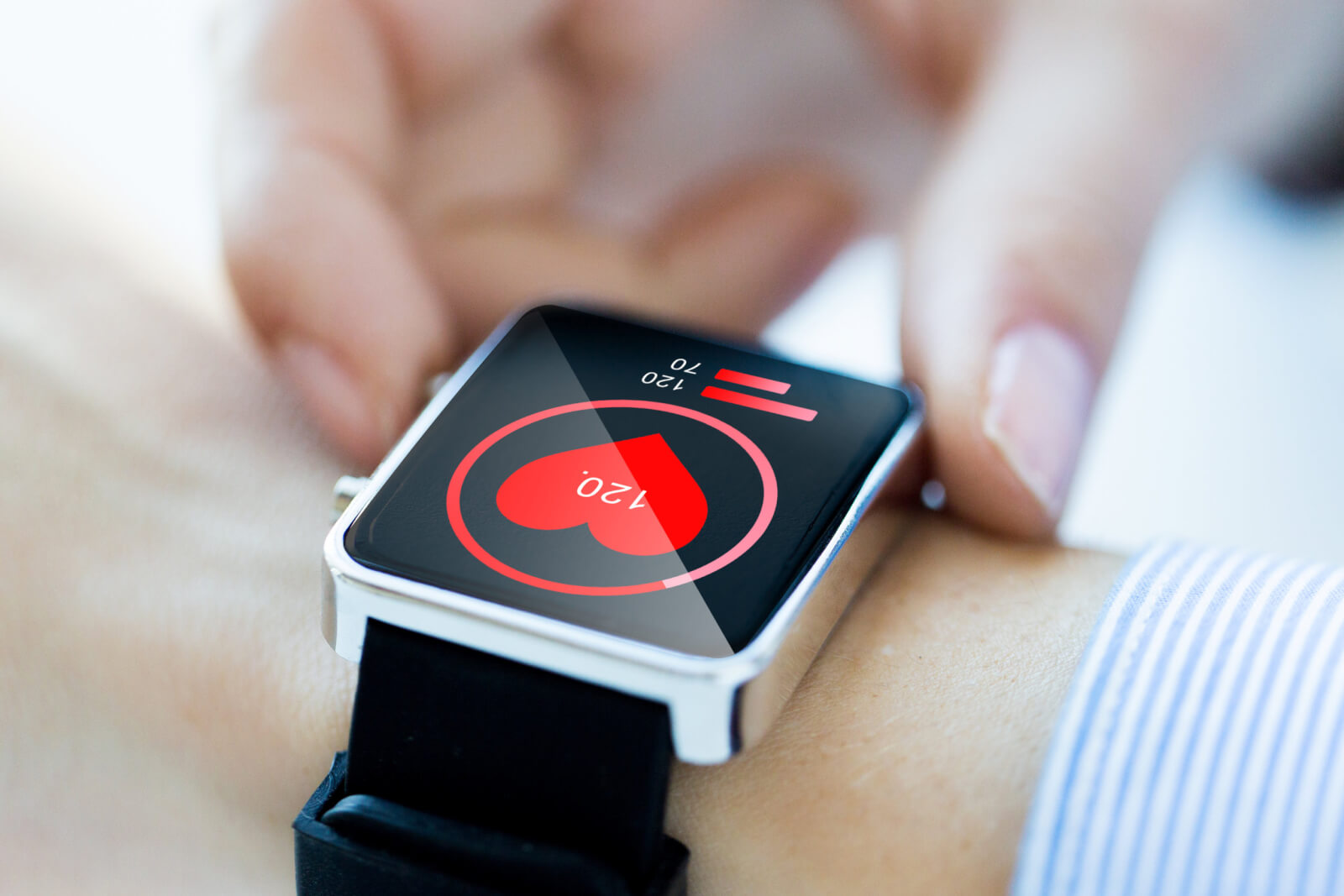After reading this article, you’ll:
- Understand the high ROI potential of influencer marketing for apps – Influencer campaigns can deliver exceptional reach and cost-effective user acquisition. Over 60% of marketers say influencer marketing yields better ROI than traditional ads, and the industry has exploded into a $24 billion market as of 2024.
- Learn effective strategies for app launches – We’ll cover how to find the right influencers for your app’s niche, craft authentic promotional content (64% of consumers cite genuine influencer reviews as the most persuasive content type), and coordinate impactful launch campaigns to maximize downloads.
- See how to sustain growth post-launch – Discover how long-term influencer partnerships (many influencers offer discounts for ongoing collaborations) and turning power users into brand ambassadors can boost retention, foster an active user community, and drive continuous app growth.

Why Influencer Marketing Is a Game-Changer for Mobile App Growth
Launching a new mobile app in today’s crowded marketplace is challenging – user acquisition costs are high and consumer attention is scarce. In fact, average cost-per-install for mobile ads in North America is over $5 per user, meaning traditional advertising can burn through budgets quickly. Influencer marketing offers a compelling alternative by harnessing trusted voices and word-of-mouth appeal. Rather than a brand’s ad, an influencer’s recommendation feels more organic and credible to potential users. It’s no surprise that 61% of consumers trust influencer recommendations, far more than the 38% who trust brand-produced ads. This trust translates directly into action – influencer content now drives about half of consumers’ purchasing decisions on a regular basis, and 86% of people report buying something an influencer recommended at least once a year.
For mobile apps, an influencer shout-out can significantly amplify visibility and user acquisition. Influencers essentially scale up word-of-mouth recommendations – consistently one of the most powerful drivers of new app installs. As we’ve noted in our guide on app discoverability, early “evangelist” users sharing an app with friends is often the spark that propels an app up the charts. Partnering with the right creators allows you to tap into these built-in networks of trust. A beauty guru on YouTube demonstrating a new photo filter app, or a fitness Instagrammer sharing her daily workout via a wellness app, can introduce your product to tens of thousands of highly targeted users overnight.
Critically, influencer marketing can also be more cost-effective than standard advertising. Marketing professors have found that influencer campaigns are currently yielding higher ROI than most other channels. In one case, a mobile app was able to drive installs at a cost of just $0.52 per install by leveraging influencer promotions – a fraction of the typical paid ad cost. With results like these, it’s no wonder 86% of U.S. marketers plan to partner with influencers in 2025. Influencer marketing isn’t a fad; it’s become a mainstream pillar of user acquisition strategy for businesses aiming to launch and grow mobile apps.
Planning an Effective Influencer Marketing Strategy for Your App
A successful influencer campaign requires careful planning and strategic alignment with your app’s goals. Rushing in without a plan can lead to mismatched partnerships or muddled messaging. To lay the groundwork:
1. Define Your Goals and Target Audience
Start by clarifying what you want to achieve. Is your primary aim to drive app downloads during launch week, boost brand awareness, or perhaps increase user engagement for an existing app feature? Your objectives will shape your campaign. Equally important, pinpoint your target audience demographics and interests. The social platforms you focus on should match where your audience spends time.
For example, if you’re launching a consumer lifestyle app aimed at Gen Z, TikTok and Instagram are likely key channels (indeed, 57% of brands rank Instagram as their top platform for influencer campaigns, with TikTok a close second at 52%). For a B2B or productivity app, you might consider LinkedIn or niche YouTube channels. Knowing your audience ensures you choose influencers who truly reach those potential users.
2. Identify the Right Influencers (Quality Over Quantity)
Finding a good match is about more than follower count. An ideal influencer partner has strong engagement and a follower profile that aligns with your app’s niche. Look for creators whose content themes and audience interests overlap with your app’s value proposition. For instance, a tech reviewer or mobile gamer on YouTube might be perfect for a new game app, whereas a popular personal finance blogger could be ideal for a budgeting app.
Micro-influencers (with, say, 5k–50k followers) often deliver higher engagement rates and niche credibility, while macro-influencers (hundreds of thousands or more followers) offer broad reach. Both can work – in fact, many B2C brands mix multiple influencers; over half of consumer brands engage 6–10 influencers simultaneously in campaigns to maximize reach. Whichever level you target, vet their content quality, authenticity, and audience sentiment. Scroll their recent posts: Do they get genuine comments and discussions? Does the influencer’s persona fit your brand image?
Remember that influencers will become ambassadors for your app, so you want partners who share your brand’s values and have credibility with your ideal users. There are influencer discovery tools and marketplaces that can help filter candidates by category, audience demographics, and engagement metrics, but nothing beats reviewing candidates manually to ensure a genuine fit.
3. Craft a Compelling Offer and Campaign Message
Once you have a shortlist of influencers, figure out what kind of collaboration will excite both them and their followers. Influencer marketing for apps works best when there’s something in it for the audience. Consider providing exclusive perks: early access to your app or a new feature, a personalized promo code for a discount or bonus, or a giveaway contest entry for those who install. These incentives not only entice users but also allow you to track conversions (unique referral codes or links help attribute how many installs each influencer generated).
When shaping the campaign message, prioritize authenticity and storytelling. Allow the influencer creative freedom to present the app in their own voice and style – their audience will respond far better to a genuine personal experience or review than to a scripted ad read. In fact, surveys show 64% of consumers find genuine reviews to be the most effective influencer content, and 55% are motivated by seeing discount codes or special offers. So, you might have the influencer create a detailed review or a “day in the life” vlog using the app, rather than a generic announcement.
Provide guidance on key features to highlight, but avoid overbearing instructions that could make the content feel forced. The goal is to have the influencer’s endorsement come off as a trusted friend’s recommendation, not a paid advertisement (even if it is – always ensure proper #ad disclosure to keep everything transparent and compliant with FTC guidelines).
4. Set Clear Terms and Timeline
Before launch, align on campaign logistics. This includes compensation (whether a flat fee per post, performance-based payment, free access to premium app features, or a combination), content deliverables (how many posts, of what type – video, stories, livestreams, etc., and on which dates), and usage rights (can you repurpose the influencer’s content in your own marketing?).
Many influencers are open to longer-term deals at favorable rates – in fact, 71% of influencers say they offer discounts for multi-month or repeat partnerships. If you anticipate wanting continued promotion post-launch, negotiating a longer-term collaboration up front can save money and build a stronger relationship.
Also, coordinate the timeline to build momentum: you might have a teaser post a week before launch (“I got to try this new app, stay tuned for my review!”), a big launch-day post or video, and follow-ups in the weeks after. Ensure everyone is clear on key dates (especially if tying into an App Store feature window or a big PR launch event). Having an agreement in writing helps avoid any confusion later.
5. Launch, Monitor, and Amplify
When launch day arrives and the influencer content goes live, be ready to capitalize on the buzz. Share or repost the influencer’s content on your own social channels. Engage with the audience – answer questions, thank users for trying the app, and encourage further sharing. If one influencer’s post is performing extremely well, consider amplifying it with paid social ads (many platforms let you turn high-performing organic influencer posts into sponsored ads for broader reach – sometimes called “whitelisting” content).
During the campaign, keep a close eye on metrics: app store analytics will show the spike in downloads, but also watch engagement on the influencer’s posts (comments, likes, shares) to gauge sentiment. Respond to user feedback coming through these channels; for example, if potential users ask “Does the app also do X?”, answer them in the comments. This real-time interaction can boost conversions and shows the community you’re attentive. It’s all-hands-on-deck during a big app launch campaign – the more you can ride the wave of influencer-driven interest, the better your results.
Executing a Successful App Launch Campaign with Influencers
With a solid plan in place, it’s time to execute the campaign for maximum impact. Launching a mobile app via influencers involves timing, coordination, and creative tactics to cut through the noise:
Build Pre-Launch Hype
Don’t wait until launch day to introduce your app. Leverage your influencers in the days or weeks leading up to release. For example, have them tease the app (“I’ve been testing a new app that’s launching soon – and it’s a game changer for organizing my day. Can’t wait to show you!”). Some brands create mystery and anticipation by not revealing the app name until launch, while others do early sign-ups or beta invites through influencers.
Early access giveaways (where an influencer’s followers can sign up to try a beta version) can generate a pool of eager users ready to evangelize at launch. This approach helped apps like Clubhouse and others create FOMO and a waiting list of users before they even fully launched.
Coordinate a Launch Day Blitz
 On launch day (or a coordinated launch week), have your influencer partners post their in-depth reviews, tutorials, or endorsements in a synchronized push. This concentrated burst can drive a surge of traffic to your App Store/Play Store listing, which not only boosts downloads but can improve your app’s ranking in the stores due to the velocity of installs. Many apps have skyrocketed up the charts by using a coalition of influencers all promoting within a short window, creating the feel of an “everywhere all at once” presence.
On launch day (or a coordinated launch week), have your influencer partners post their in-depth reviews, tutorials, or endorsements in a synchronized push. This concentrated burst can drive a surge of traffic to your App Store/Play Store listing, which not only boosts downloads but can improve your app’s ranking in the stores due to the velocity of installs. Many apps have skyrocketed up the charts by using a coalition of influencers all promoting within a short window, creating the feel of an “everywhere all at once” presence.
Ensure that the content is high-quality – for instance, an influencer might do an Instagram Story series walking through how they use the app in real life, or a YouTube video titled “My First Impressions of [Your App] + Exclusive Promo Code”. Provide the influencers with tracking links or unique promo codes so you can measure each one’s contribution. Internal coordination is key: your servers/infrastructure should be ready for a spike in users, and your support or social media team should be on standby to assist new users coming from the campaign.
Encourage User-Generated Content and Sharing
A powerful aspect of influencer marketing is the ripple effect. Encourage influencers to ask their followers to share their own experiences with the app. Perhaps run a challenge or hashtag campaign: if you launched a fitness app, an influencer could challenge their followers to post their workout summary from the app with a special hashtag, with the chance to be featured or win a prize.
This turns the initial influx of users into secondary promoters, generating earned media. The more people posting about your app, the more organic buzz and downloads you’ll see beyond the initial influencer posts. Feature some of this user-generated content on your official channels to further validate new users’ experiences.
Leverage Influencer Content Across Channels
Don’t view influencer posts as isolated to social media – repurpose the best content to strengthen your overall app marketing. For example, short testimonial clips from an influencer’s video can be edited and used in your app store listing video or in advertisements. Quotes from an influencer’s review can be featured on your website or press releases (“Tech influencer Jane Doe calls it ‘a must-have app for busy moms’”).
Always get permission per your agreement to reuse content, but most influencers are fine with you amplifying their work (it benefits them too with more exposure). By integrating influencer-generated content into your broader marketing, you maintain consistency and social proof across every user touchpoint.
Throughout the launch execution, maintain good communication with your influencer partners. Thank them for their contributions, share any exciting milestones (“We hit 10,000 downloads in 24 hours!”), and keep the relationship positive. If the campaign is going well, you’ll want to work with these creators again for future updates or new apps – a successful launch can be the beginning of a valuable long-term collaboration.
Post-Launch: Leveraging Influencers for Long-Term Growth
Influencer marketing isn’t only a launch tactic – it can be a cornerstone of your ongoing growth strategy. After the initial campaign, consider ways to keep the momentum going:
Nurture Long-Term Partnerships
 If an influencer drove great results, build a longer relationship. Perhaps they can do a follow-up “one month later” review of your app, or become an ambassador who mentions your app periodically over time. Long-term influencer-brand relationships benefit everyone: the influencer gets a steady partnership (and often better rates – many are willing to charge less per post for ongoing deals), while your app gets consistent exposure and credibility from a familiar advocate.
If an influencer drove great results, build a longer relationship. Perhaps they can do a follow-up “one month later” review of your app, or become an ambassador who mentions your app periodically over time. Long-term influencer-brand relationships benefit everyone: the influencer gets a steady partnership (and often better rates – many are willing to charge less per post for ongoing deals), while your app gets consistent exposure and credibility from a familiar advocate.
Moreover, influencers who genuinely love your app can evolve into true brand champions. They’ll integrate mentions naturally into their content (not just formal ad posts) which keeps your app in front of new potential users continually. An “always-on” influencer strategy – where you have a rotating roster of creators talking about your app throughout the year – can sustain user acquisition beyond the launch spike, smoothing out the peaks and keeping growth steady.
Engage Emerging Micro-Influencers and Power Users
Over time, you’ll likely discover some enthusiastic users of your app who have their own followings (even if small). Don’t overlook your power users as potential micro-influencers. For example, if you find a user who’s referred a lot of friends or frequently posts positively about your app on social media, reach out to them. You can offer to formalize the relationship in a brand ambassador program – give them perks like free upgrades, swag, or early access to new features in exchange for ongoing promotion or feedback.
Some of the most effective influencer programs grow organically from a app’s community of users. These authentic fans-turned-ambassadors will promote your app out of genuine enthusiasm, which resonates strongly with peers. As we discussed in our article on building app communities, leveraging influencers and power users as community catalysts can add credible voices and encourage more user-generated buzz within your app’s user base. By activating these grassroots influencers, you create a virtuous cycle: engaged users bring in more users, who in turn enrich the community and attract others.
Refresh Content with Updates and Events
Keep giving influencers new things to talk about. Whenever your app releases a significant update, launches a new feature, or hits a noteworthy milestone (e.g. “1 million users” or winning an industry award), loop in your influencer network. For instance, you can have influencers help announce a new feature (“ just added a dark mode – checking it out now!”) or celebrate a milestone (“I’m hosting a Q&A with the founders of on IG Live to celebrate their 100K user milestone”).
These periodic campaigns re-engage both the influencers and their audiences, reminding people about your app and showcasing that it’s continuously improving. Live collaborations can also deepen engagement – think Instagram Live, Twitch streams, or Twitter Spaces where the influencer uses or discusses the app in real-time with their audience. This interactive format lets potential users ask questions and see the app in action, often converting curious onlookers into installers on the spot.
Expand to New Influencer Segments
As your app grows, you might identify new user segments to target and can branch out to influencers in those areas. For example, perhaps your productivity app started with tech reviewers, but you realize freelancers and students are a big chunk of your user base – you could engage some studygrammers or freelance work YouTubers to reach those groups. Continually analyze your user demographics and find influencers who align with emerging segments. This keeps your marketing fresh and taps into new pools of users.
In essence, treat influencer marketing as an ongoing relationship-building exercise, not a one-off transaction. Much like customers, influencers who feel a genuine connection to your brand will stick around. Some of the most successful apps have formed quasi-“families” of influencers who regularly champion their brand. By cultivating these relationships, you ensure your app remains part of the social media conversation well beyond launch.
Measuring Success and Maximizing ROI
To truly capitalize on influencer marketing for your app, you need to measure what matters and refine your approach based on data. Here’s how to close the loop on your campaigns:
Track Install Metrics Rigorously
From the get-go, set up tracking to attribute app installs to each influencer and channel. Unique referral links (e.g. using URL parameters or a mobile measurement partner like Branch) and promo codes are invaluable here. They allow you to see exactly how many installs and sign-ups came from Influencer A’s Instagram Story versus Influencer B’s YouTube video, for example. Both Apple’s App Store and Google Play Console now offer some referral tracking capabilities, and third-party analytics can provide deeper insights.
By analyzing this data, you can calculate cost per install (CPI) for each influencer and identify where you got the best bang for your buck. If one influencer delivered 1,000 installs for $1,000 (CPI = $1) and another delivered 500 installs for $2,000 (CPI = $4), you know which partnership was more efficient.
Monitor Post-Install Engagement and Quality
Installs are only part of the story. Track how the users acquired through influencers behave in your app. Do they sign up, complete onboarding, make purchases, or remain active after a week or month? Sometimes an influencer with a smaller, tight-knit audience might bring you users who retain better and have higher lifetime value than those from a bigger influencer whose audience wasn’t as targeted.
Look at retention rates, in-app actions, and revenue from each cohort of users if possible. This will tell you not just the quantity of users each influencer drove, but the quality. You might find that an influencer with a niche focus (like a finance guru) brings in fewer but very high-value users for a fintech app, whereas a mainstream celebrity brings a flood of curious downloaders who churn quickly. Both types can be useful, but understanding the difference is key to optimizing ROI.
Calculate ROI and Compare to Other Channels
Factor in your spend (or product/service costs) on each influencer campaign and calculate the return. This includes not only immediate revenue (if any) from new users, but the projected long-term value of those users. Many marketers compare influencer marketing ROI to that of other channels like Facebook ads or search ads. If you see that $1 spent on influencer marketing is yielding $5 of value (a 5:1 ROI) while $1 on traditional ads yields $3, that’s a sign to double-down on influencers.
In fact, in a recent study, 60% of marketing professionals agreed that influencer marketing outperforms traditional advertising in ROI. Track metrics such as CPI, cost per purchaser, and even softer metrics like social engagement or app store keyword ranking improvements (a surge of downloads might boost your ranking for certain keywords, indirectly aiding organic discovery). By quantifying these outcomes, you can justify your influencer marketing spend and secure more budget for it in the future.
Learn and Iterate
Treat each campaign as an experiment. Debrief after your launch: Which influencers drove the most installs? Which content formats resonated best (e.g., did Instagram Stories outperform feed posts, or did long-form YouTube videos drive more engaged users)? Were there particular messages or creative approaches that clearly worked or fell flat? Use these insights to refine your next campaigns. Perhaps you discover that tutorials and how-to videos led to more sustained app usage than flashy unboxing-style promos – that’s golden knowledge to inform future content briefs.
Don’t be afraid to adjust your influencer roster over time: keep the high performers, test out new up-and-coming influencers, and pause on those who didn’t deliver as hoped. The data can reveal surprising truths; for example, researchers from the University of Washington found that by reallocating influencer budgets based on performance data (focusing on factors like an influencer’s originality and audience fit), brands could boost engagement outcomes by over 16%. In other words, continuously optimizing your influencer strategy pays off significantly.
Listen to Feedback from the Community
Finally, remember that success isn’t just about raw numbers – it’s also about the qualitative impact on your brand. Keep an eye on the comments and discussions sparked by the influencer campaign. What are people saying about your app? You’ll often pick up product feedback and ideas for improvement from these conversations. Maybe users loved a particular feature the influencer highlighted, or maybe they’re asking for an Android version if you launched on iOS.
This feedback is extremely valuable for your product roadmap and marketing messages. Influencer campaigns open a dialog with your target audience; make sure you’re listening and responding. Showing that you hear user suggestions (for instance, commenting “Thanks for the idea, we’re working on that feature!”) can turn curious onlookers into loyal customers.
By diligently measuring results and closing the feedback loop, you’ll not only prove the value of influencer marketing – you’ll make each subsequent campaign smarter and more effective. Over time, this data-driven refinement leads to an influencer marketing engine for your app: a repeatable, optimized process that consistently brings in new users and drives growth.
FAQs: Influencer Marketing for Mobile Apps
Q1: How do I find the right influencers for my mobile app?
A: Start by looking for influencers who cater to the same audience that your app targets. Search relevant keywords and hashtags on platforms like Instagram, TikTok, YouTube, and Twitter to discover creators in your niche. You can also use influencer marketplaces or databases (e.g., ones that filter by topic, follower count, engagement rate, etc.). Once you have candidates, evaluate their content and audience quality. Look at their engagement (do they get genuine comments or just likes?), the tone of their interactions, and whether their followers fit your target demographics.
It’s often better to choose someone with a smaller but highly relevant audience than a big-name celebrity who isn’t closely aligned with your app’s theme. Finally, don’t hesitate to reach out and start a conversation – sometimes an influencer who hasn’t worked with an app before could become your best advocate if they’re genuinely interested in what your app offers.
Q2: How much does it cost to run an influencer marketing campaign for an app?
A: Costs can vary widely depending on the influencers you work with and the scope of the campaign. Influencers with a following in the tens of thousands might charge a few hundred dollars (or accept non-monetary compensation like free app subscriptions or equity, in the case of startups), whereas top-tier influencers with millions of followers could charge thousands or even tens of thousands of dollars per post.
A recent report found that about half of influencers charge between $250 and $1,000 per social post, but again, that range shifts upward for bigger names. Many influencers will negotiate – for example, offering package deals (multiple posts, or a discount for a long-term partnership). Micro-influencers are often more budget-friendly and can be very effective for niche targeting. Beyond influencer fees, also budget for any perks or incentives you’ll provide (like contest prizes, referral bonuses, or content production costs if you’re helping create video demos, etc.).
The good news is that when done right, influencer marketing can be cost-efficient – you’re paying for actual engagement with a targeted audience, and as mentioned earlier, many marketers find the ROI outperforms other channels, meaning the installs or revenue you gain can outweigh the costs.
Q3: Is it better to work with a lot of micro-influencers or a few macro-influencers?
A: There’s no one-size-fits-all answer – it depends on your goals and resources. Micro-influencers (typically those with 5,000 to 50,000 followers) tend to have very engaged audiences and can come across as more relatable and authentic. They often charge less and may be eager to work with brands, which is great if you’re on a tight budget or want to spread your message across different communities.
Five micro-influencers each with 20k highly interested followers might collectively drive more conversions than one influencer with 100k followers, if those big-follower audiences are less targeted or less engaged. On the other hand, macro-influencers or celebrities give you sheer scale and often media buzz – one mention from a major figure can put your app on the map quickly. They can be useful for broad appeal apps or when you want a big PR splash. Many app marketers adopt a hybrid approach: secure a couple of larger influencers for wide reach and a constellation of smaller influencers for depth and niche targeting.
This way, you get the benefits of both – broad awareness and high engagement in pockets of your core user base. Just remember to tailor your approach to each; larger influencers might require more formal negotiation and have stricter content guidelines, whereas micro-influencers might collaborate more closely and flexibly with you. Both can be effective – the key is ensuring whichever influencers you choose genuinely resonate with your app’s concept.
Q4: What social media platforms work best for promoting a mobile app through influencers?
A: It largely depends on your app and audience. Instagram and TikTok are currently the top platforms for consumer-focused app promotion – Instagram has long been the influencer hub for lifestyle, fashion, fitness, etc., and TikTok’s rapid growth and virality make it powerful for reaching younger users with snappy video content. If your app lends itself to visual demonstration or fun challenges (think games, AR filters, creative tools), TikTok can drive massive engagement and even viral moments.
YouTube is excellent for longer-form content – tech reviewers, how-to tutorial creators, and gamers on YouTube can provide in-depth showcases of your app, which is great for educating users on features. Twitter can work if your app is newsy or tech-oriented (the tech and crypto communities, for example, are active there), and LinkedIn could be useful for B2B or professional productivity apps with influencers who are thought leaders in an industry. One strategy is to repurpose content across platforms: for example, a YouTuber might do a detailed review, and you can have them post highlights on Instagram or Twitter to funnel people to the full video.
Also, consider where your app is used – if it’s a mobile-first consumer app, mobile-centric platforms like Instagram, TikTok, and Snapchat are logical choices, whereas a developer tool might find its audience through developer blogs, Reddit, or Stack Overflow (where “influencers” are more community experts than traditional social media stars). Research where your target users hang out online, and prioritize those channels.
Q5: How do I measure if an influencer campaign is actually helping my app?
A: Measuring the success of an influencer campaign involves tracking a combination of app metrics and social metrics. Firstly, use tracking links or promo codes unique to each influencer so you can directly attribute how many app installs or sign-ups came from their audience. Monitor your download analytics closely during and after the campaign – a spike during the time an influencer posted is a strong signal of impact (and you can compare the magnitude of spikes across different influencers’ posts if they went live at different times).
Beyond installs, look at in-app actions: Are the users acquired through the campaign completing onboarding at a high rate? Are they sticking around (e.g. Day 7 or Day 30 retention)? If you have revenue events (subscriptions, purchases), track those from the influencer-referred users as well. On the social side, gauge the engagement on the influencer’s posts – views, likes, shares, comments – to see how well the message resonated. Sentiment in comments can also be telling (e.g. lots of “I’m downloading this now!” or thoughtful questions about the app are good signs). If you have conversion pixels or analytics set up, you might also see downstream effects like increased traffic to your website or app store page from social media. Another advanced metric is the uplift in organic installs – sometimes an influencer campaign boosts your app’s chart ranking or word-of-mouth enough that you see more organic (unattributed) installs during that period.
While harder to measure, it’s a bonus effect. Ultimately, you’ll want to calculate the ROI: compare the value (revenue or estimated LTV of new users) gained from the campaign to what you spent on it. If ROI is positive and the new users are high-quality, that’s a clear success. If not, analyze where the bottleneck was – was it low click-through (maybe the content or call-to-action could improve), or lots of installs but low retention (perhaps expectations set by the influencer content didn’t match the app experience, indicating a need to tweak messaging or onboarding)? By measuring these aspects, you can glean a full picture of an influencer campaign’s effectiveness and learn how to improve future efforts.
Influencer marketing has emerged as one of the most potent tools for launching and scaling mobile apps in an era of intense competition. By carefully selecting the right voices, crafting authentic and engaging campaigns, and continuously learning from the data, businesses can transform influencers into powerful allies in app growth. Whether you’re aiming for a blockbuster launch or sustained user base expansion, the strategies in this guide will help you tap into the dynamic synergy between social media influencers and mobile app success. With the credibility of peer-like recommendations and the creativity of today’s content creators, your app’s marketing can achieve the kind of resonance and reach that truly sets it apart in the marketplace. Embrace the process, keep refining your approach, and you may find that a network of enthusiastic influencers is the secret weapon to take your mobile app from zero to viral – and beyond.





